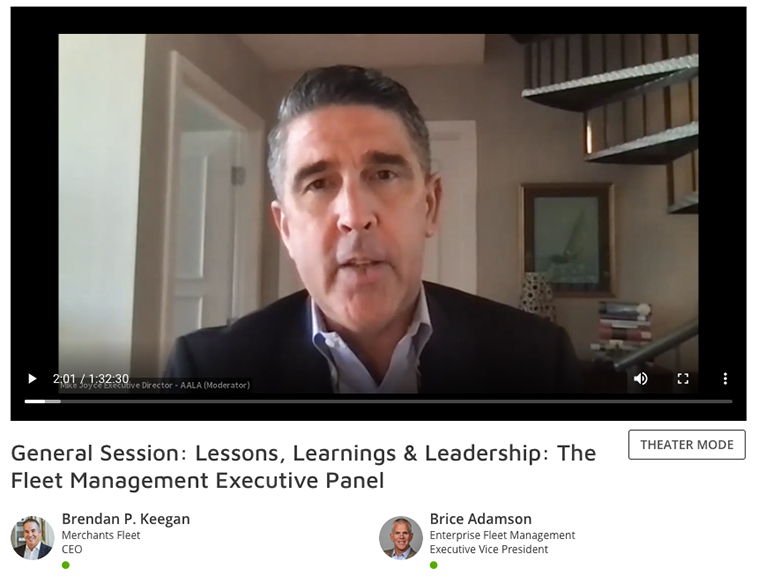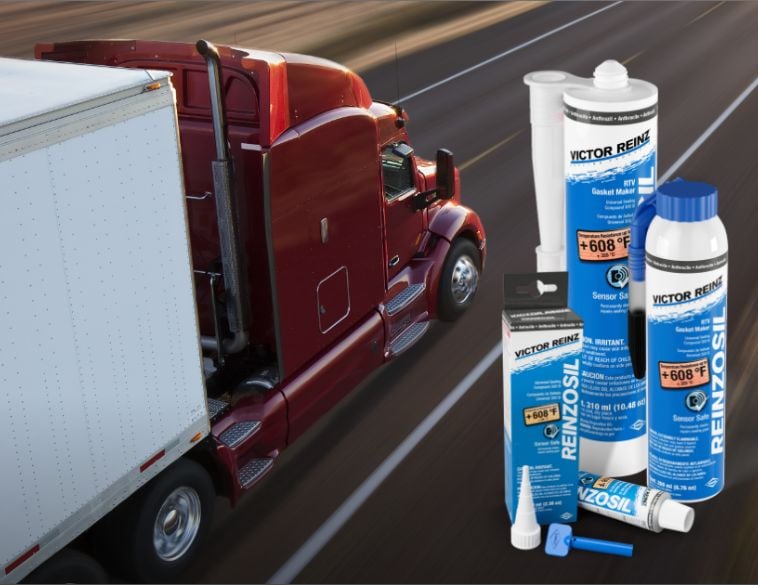Part 1: Assessing the practicalities of EV adoption in the fleet sector
Arguably one of the most anticipated sessions of the 2021 NAFA I&E Virtual Experience, was the fleet executive management panel general session entitled Lessons Learnings & Leadership.
This discussion covered a lot of ground and in an effort to bring our readers up to speed on all the developments Autosphere, has elected to cover it in two separate parts.
The discussion brought together key top executives and thought leaders from across the North American fleet management space:
- Brice Adamson, Executive Vice President, Enterprise Fleet Management;
- Matt Dyer, CEO, Leaseplan;
- Dan Frank, President & CEO, Wheels Inc.;
- Anthony Foursha, Executive Vice President, Sales & Service Excellence;
- Mike Joyce, Executive Director, American Automotive Leasing Association
- Brendan Keegan, CEO, Merchants Fleet.
Kicking things off, moderator Mike Joyce introduced Dan Frank, Brendan Keegan and Matt Dyer, with a discussion on arguably the biggest topic currently circling the automotive industry, electric vehicles.
Revolutionary step
Dan Frank explained that as far as EVs are concerned, moving from mechanical to electric drivetrains does feel like a revolutionary step, particularly as it relates to not just the fundamentals such as electric motors and battery systems, but the software that supports EV operation, like the case with today’s smartphones.
Frank said he predicts there will be success and failure in the EV space, and that product lifecycles are likely to occur much faster than in the past.
“I think, that as a fleet industry we need to think about that a little bit differently and be prepared to try some things—to see some suppliers try and fail and be prepared for some of those changes and adapt as necessary.”
While acknowledging the capacity for greater innovation and capability through connectivity and information technology, Frank also noted that there are still a lot of questions revolving around which sectors of the transportation industry will prove successful in terms of EV adoption and also issues revolving around pricing, distribution and infrastructure support.
Brendan Keegan explained that the pace of change has quickened significantly in recent years and is likely only to accelerate.
“What we’re going to see over the next five years are gains that pale in comparison to the changes we’ve seen in the last 50 years, which has been very much an evolutionary approach in the industry.”
Keegan talked about the growing influence of Environmental and Social Governance (ESG) policies—with consumers choosing to do business with organizations and brands that are adopting this approach toward leadership and development.
“People are looking for some real actionable change,” he said, “and the time for greenwashing is over.”
While major companies such as Amazon and Walmart are adopting ESG focused policies, Dyer explained that in the automotive space, major players such as General Motors are also taking a similar approach, citing the company’s new BrightDrop electric delivery vehicle entity as a prime example.
And while, at present, legacy automakers such as GM, Ford and Stellantis are being joined by a whole host of EV startups, many of these are not likely to survive long-term and for those that do, the key will be not the electric vehicles themselves, but the infrastructure that supports them.
Rethinking strategy
Matt Dyer, in picking up where Brendan Keegan left off, talked about the move towards electric vehicles and how politicians are continually pushing for stricter emissions targets by the middle of the 21st century.
Dyer acknowledged that for many businesses this is both an exciting and also challenging time as it requires many organizations to completely rethink their business strategy.
At the fleet level, Dyer explained that a critical factor in assessing the suitability of EVs for the organization, along with driver appetite and the ability to leverage the power of telematics and connected vehicle data.
He stressed the importance of good communication and outlining a clear and concise sustainability agenda and corporate goals.
“If it is done right it can really work in a very powerful way,” he explained.
While Dyer acknowledged the Biden Administration’s plan to install around 500,000 charging stations nationwide in the U.S., it is nowhere near enough to support mass EV adoption.
He noted that the new vehicles coming out, such as trucks like the Ford F-150 Lightning, E-Transit and Chevrolet Silverado EV really need to work from a fleet perspective.
“We’ve really got to know that these vehicles are going to be available in the volumes that our customers need them because that’s what’s going to drive adoption into replacement cycles.”
He also noted that while setting high standards for fuel efficiency and emissions is laudable, there need to be real incentives in place to make achieving them actually feasible.
“I feel very excited about what can be achieved but it’s going to be quite a long road to make sure we can make the right steps from here,” said Dyer.
Range anxiety is real
Bryce Adamson explained that from a rental car perspective, range anxiety as it relates to EVs remains a real problem along with the access to adequate charging facilities.
He noted that when it comes to EV adoption, certainly in the fleet space, it will be light-duty vehicles where the biggest impact will likely be, at least in the short term.
Adamson also explained that the ongoing global semiconductor shortage and supply chain issues could also impact EV availability for the foreseeable future, something that many fleet operators will need to consider.
Anthony Foursha added that in terms of EV adoption there are at present, a great many unknowns.
These include how to effectively manage EV operation at the fleet level, including which asset types fit with the EV business model, range anxiety concerns, vehicle weight and development of battery technology.
He noted that at present, weight remains the biggest drawback for EVs and unless we see significant strides in battery efficiency and weight reduction, it is unlikely that EVs will work for all fleet applications, particularly on the heavy-duty side.
In order to be successful, Foursha said it will require cross-industry collaboration, particularly if fleets are to meet specific emissions reduction targets by a determined date.
The panellists also discussed the maintenance implications of EVs including wearables such as tires and brakes.
The general consensus was that at present, it is still too early to really draw conclusions and that coming up with effective maintenance strategies will rely on both common sense and ongoing research.



